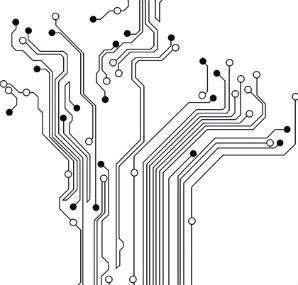
Many have come to believe that trying to be innovative is a dangerous game in medical device packaging, where regulatory compliance and business risk are significant factors in new developments. Most medical device manufacturers (MDMs) would likely find themselves out of business if they took hasty risks with new developments, as the industry constantly requires products to compete, meeting ever-changing customer needs on top of stringent regulations and compliances. But although innovation in medical packaging may not yield the same return on investment or perceived benefit versus reward, it does exist, and when done correctly, such developments can mitigate risks and remain compliant with industry regulations while delighting customers in the process.
Innovative packaging solutions are much more apparent in sectors like retail, where packaging can be a deciding factor in first-moment-of-truth events in which a product is selected over a competitor, often based on its packaging. Retail manufacturers can also secure brand loyalty in second-moment-of-truth events, where packaging may facilitate the use of the product or convey product quality. While these factors are not as beneficial or necessary in the medical device sector, packaging still has value – and that value is constantly increasing.
Why innovate?
So, what can innovative packaging offer to an MDM? There are several benefits, though they are difficult to quantify. The importance of brand recognition has increased significantly over the past few years, since the US FDA allowed advertisement for drugs and medical products in print and visual media. A packaging design that acts as an extension of the image suppliers want to portray to customers can have positive reinforcing effects, such as a perceived impression of increased quality or performance. Take Apple, for instance: in the iPhone and iPod, we see packaging that indicates the quality and innovation of the products; packaging designed to be unique and different from competitors’. Of course, the decision to buy an iPhone is likely not driven solely by its packaging – but it certainly conveys the image and messages that Apple wants its customers to experience.
For many commodity-like products within the medical industry, packaging ideologies such as this could provide the much-needed product differentiation and competitive advantage that MDMs increasingly need to survive. An implantable-screw packaging system, for example, would typically be packaged in single or double pouches, or in sterile metal tray carriers, and hospitals would have to sterilise the screw prior to use. With traceability and direct part marking requirements introduced as part of unique device identification (UDI), the screw tray may no longer be an option, as such configurations will be more logistically challenging to support. A new and innovative packaging solution has therefore been developed, not only to deliver a single sterile screw compliant with UDI traceability requirements, but also to provide improved efficiencies for hospitals, to reduce or eliminate internal handling or processing. This new delivery system also allows better product organisation and aseptic presentation, improved product identification and labelling, and reduced reprocessing of sterile medical trays by the MDM.
Not just novel marketing: packaging and usability
Some readers may recall the introduction of the Target pharmaceutical bottle and cap. Getting a prescription filled at Target – simply to get a sample of its new packaging – I was surprised: its solution was elegant. It aided in dosage compliance with colour coding, and provided improved label legibility and human-use metrics. Target acknowledges that the innovative packaging change improved its pharmaceutical profits.
Packaging that aids in the use of a product is a huge area of opportunity, whether by combining steps in the operating room, or by improving the internal supply chain or processing required for the product. When the products being offered are equivalent in performance, other metrics such as cost, usability and the additional value the packaging brings to the table can contribute to decisions in purchasing and tendering. Another increasing desire is to improve sustainable metrics – to meet corporate initiatives as well as for the benefit of customers looking for these types of improvements. In some cases, major hospital chains are including sustainability in their contract and tendering decisions. This is quickly growing in significance in the US, but it has been a significant factor in Europe for some time already. The development and commercialisation of new and alternate materials can provide significant incremental improvements to sustainability metrics and reporting, and this supports MDMs’ commitments to preserving the environment in which they live and operate.
Finding space for innovation
With the benefits that innovative packaging can offer businesses, why don’t more MDMs put more effort into exploring innovative packaging solutions? There are several reasons that might come into play. Particularly in the medical devices sector, businesses seem to view packaging as a tool to get their product to the customer – but that’s the extent of their considerations. There’s also the unhelpful attitude of "if it isn’t broken, don’t fix it". Resource availability is often a readily apparent challenge. If a business cannot quantify the benefit of a particular development, it won’t be pursued. There also seems to be a lack of commitment in some cases, where managing parties are uncomfortable with failure – but failure is part of innovation.
It is curious that the same anti-failure concept is not considered from the angle of a product’s wider success. MDMs will quickly find themselves out of business if they refuse to make extensive investments in innovation to maintain their product portfolios. The ability to fail, learn and grow must be fostered to establish an innovative culture within a business. One of the biggest challenges is probably the risk innovation poses to the business itself: what if it fails and leads to recalls? Or, worse yet, what if it causes harm to a patient, damaging the brand and generating fines? Each of these is a valid concern, but they all exist in the development of new devices, too. It comes down to how well businesses address and mitigate risks to ensure that a capable and robust solution is developed, verified and validated.
It is important to note that FDA defines a product as the device plus the packaging. This makes sense, as each element must be compliant with all applicable design control requirements (21 CFR, part 820) and ISO regulations. Following the methodical design control process, actions include considering user needs, design inputs/outputs, risk management processes, verification and validation; this ensures the robustness of the design and packaging process. Following a rigorous and thorough control process minimises the risks to the businesses, just as it does for new product development projects.
Each step of design control is extremely important, and failure to adequately address them all can lead to business or product failure. They are challenging, however, and depending on the packaging system being developed, they can represent complicated new processes, test methods and technologies that will need to be created. Each aspect can be a strain on resources, capital and testing.
One of the most critical – and overlooked – aspects of design control is user needs. This critical factor is what drives the direction of the development and project work to follow, so it is vital that customers’ needs are addressed in the solution, and that constant review and confirmation is seen throughout the process. This applies not only to the external customer, but to internal users as well. The best packaging system ever developed would be rendered useless if manufacturing or production could not confidently reproduce it.
The identification of unknown user needs can help customers use, handle, dispense and dispose of packaging efficiently and effectively. In a laparoscopic surgery, for example, where the lights in the operating room are dimmed or turned off, it may be beneficial for packaging to incorporate bright or fluorescent inks in compensation, to support the opening of the packaging. These types of observations can be identified through detailed observations and customer-prototype interfaces. Several iterations of this cycle may be needed for the best results: taking customer feedback, making adjustments to the design, then confirming the user needs have been addressed.
Design and development
Packaging innovation that is tied directly to a product launch can mean a drastically shortened packaging development time, in order to meet aggressive product launch schedules. In many cases, packaging development must trail product development, as it is difficult to develop a packaging solution without access to the product it must enclose. Unfortunately, this often puts packaging in the critical path, hastening and adding stress to the design process, which can lead to avoidable mistakes or ill-advised shortcuts being taken. Ideally, new packaging solutions or platforms should be developed in an R&D environment, where the design control process can be followed without the direct pressure associated with product launch dates. Once a platform is fully verified and validated, it can be rolled out for production application.
Understanding and managing the risks associated with the development of packaging design and the packaging process activities is paramount to success. Risk management tools, such as design failure modes and effects analysis (DFMEA) and process failure modes and effects analysis (PFMEA) documents should be considered living documents, reviewed and revised regularly as new risks are identified during development. Mitigations should be identified to lower risks where possible, or to illustrate significant hurdles or changes that could delay – or even prevent – development moving forward. Missing critical risks and their mitigation can often lead to failures and risks to patients or businesses.
Innovative medical device packaging can and must coexist with regulatory and industry compliance requirements. Failing to pursue innovation in the current market will contribute to product performance limitations and loss of brand recognition. It must be remembered, however, that safe, effective and compliant packaging systems are paramount to patient outcomes and business success. Delighting the customer should be the goal in every business pursuit, and packaging should be included in this consideration. Strong design control processes, and verification and validation disciplines, ensure a defendable approach to development, and in this manner, true packaging innovation can safely and effectively be achieved.






